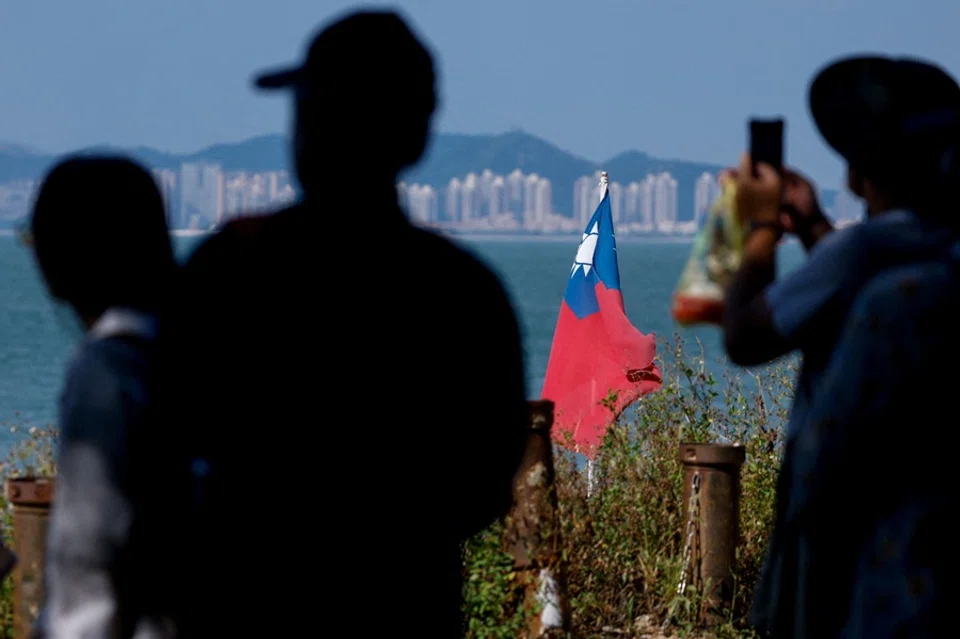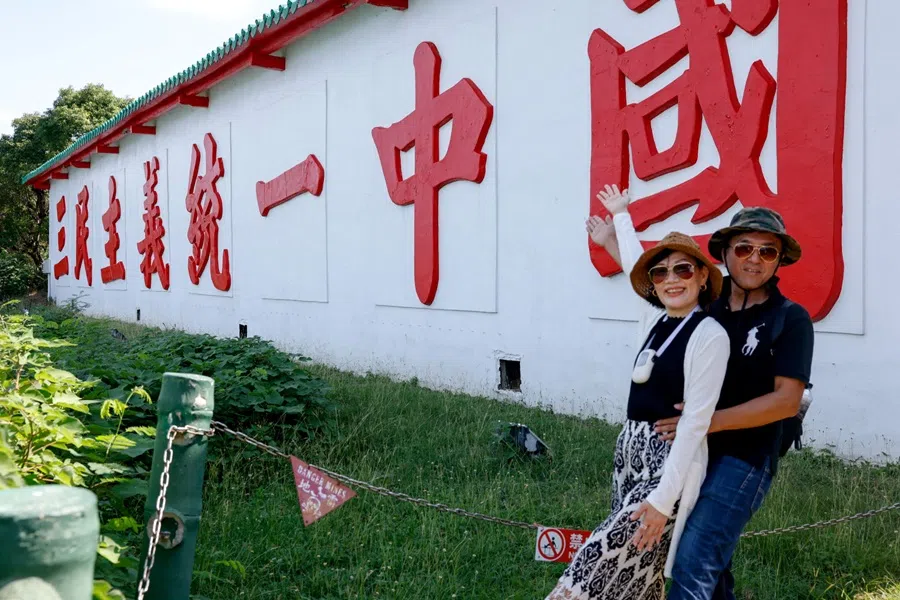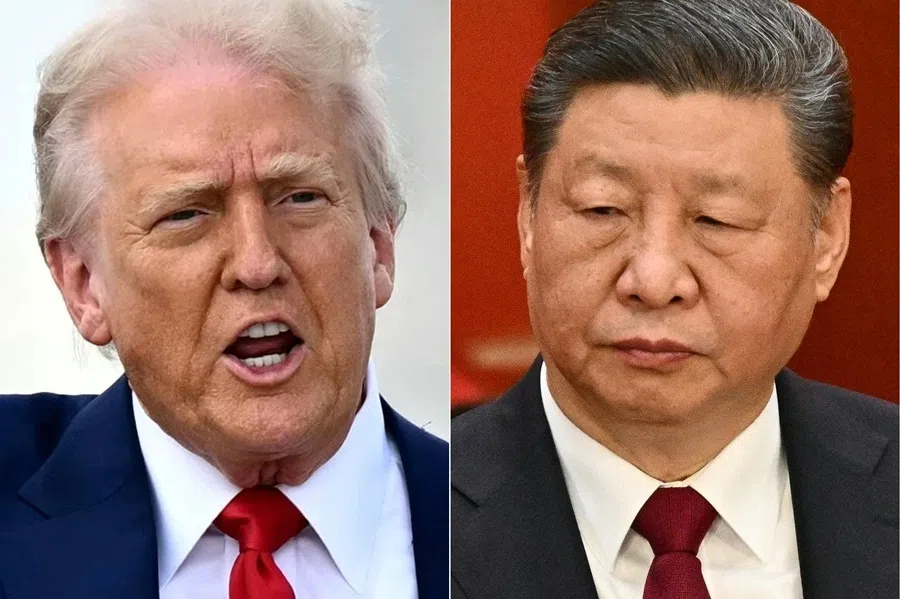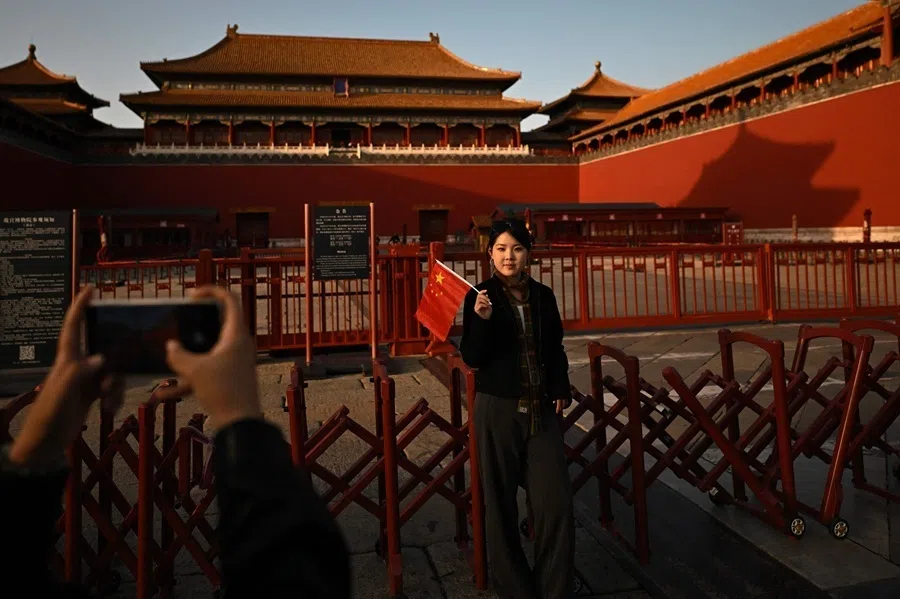The reunification roadmap: How Beijing plans to win Taiwan without war
Beijing’s messaging on Taiwan has evolved from rhetoric to roadmap. By adapting Hong Kong’s “patriots governing” model and testing US resolve, the 2028 Taiwan presidential election could become a defining moment for the future of the Taiwan Strait. Lianhe Zaobao correspondent Sim Tze Wei gives an analysis.

Starting from 26 October, Chinese state media Xinhua News Agency published three heavyweight articles over three days under the byline “Zhong Taiwen” (钟台文), outlining the initial framework of a “one country, two systems” policy plan for Taiwan. Although no timetable was set, it is evident that advancing cross-strait reunification is now on the agenda.
...the Chinese Communist Party (CCP) clearly signals that reunification is no longer mere propaganda, but rather a concrete roadmap and policy vision.
The three articles move in lockstep towards reunification: first asserting through history and post-war legal grounds that Taiwan is part of China, then proposing the benefits and governance framework of reunification, and finally declaring it an unstoppable trend. Through these pieces, the Chinese Communist Party (CCP) clearly signals that reunification is no longer mere propaganda, but rather a concrete roadmap and policy vision.
The three articles
The first article, “The Nature and Origin of the Taiwan Question”, cites the Cairo Declaration, Potsdam Proclamation and Japan’s Instrument of Surrender, stressing the mainland’s “formal recovery of Taiwan in both legal and practical terms”. It makes clear that as long as people on both sides of the Taiwan Strait identify as Chinese and are part of one family, they can sit down for dialogue.
The second article, “Benefits of Cross-Straits Development and Reunification”, is the most striking. It paints a rosy picture of post-reunification governance and economic gains — so much so that, from the perspective of “one person, one vote” democratic politics, it could almost read like the CCP’s campaign manifesto for Taiwan.
Of course, it is not. The article makes that clear: after reunification, foreign countries may set up consular or other official or semi-official offices in Taiwan, but only with the approval of the Chinese central government.
As for who could become Taiwan’s leader (whatever the title may be then), Beijing draws a firm line — anyone who is not a patriot need not apply.

The article clearly stipulates that the principle of “patriots governing Taiwan” with a high degree of autonomy will be implemented, which would allow “the people of Taiwan to truly govern their own affairs”. Private property, religious beliefs and legal rights will also be fully protected. As for who could become Taiwan’s leader (whatever the title may be then), Beijing draws a firm line — anyone who is not a patriot need not apply.
The article also touts the benefits of reunification: Taiwan’s finances will be fully devoted to serving the people, and the island can share the overall resources of the nation. All Taiwan goods entering the mainland would be tariff-free; Taiwan businesses can leverage the mainland’s vast capital and market; and cross-strait industrial chains would be deeply integrated, with industries such as integrated circuits and precision machinery complementing each other.
The third article, “The Reunification of the Motherland is Inevitable and Irresistible”, stresses that reunification is not a matter of choice but an inevitability. It confidently asserts that the “strength of the motherland determines that ‘Taiwan independence’ is a dead end and that reunification is irresistible; it also determines that external interference will not succeed”. It urged both sides of the Taiwan Strait to sit down to talk and come up with a reasonable “two systems” proposal for Taiwan.

Given the tone and timing of these moves, is something major about to happen in Taiwan?
Why now?
The timing of Beijing’s publications is also telling. They were released just before the Chinese and American heads of state’s meeting in South Korea, and after Beijing’s legal establishment of the “Commemoration Day of Taiwan’s Restoration”; CCP Politburo standing committee member Wang Huning’s proposal of seven ways Taiwan will be better after reunification; and the election of Cheng Li-wun — the former legislator who declared “I am Chinese” — as Kuomintang chair.
At the same time, Beijing has been reinforcing its claim that UN General Assembly Resolution 2758 embodies the one-China principle. Amid mounting pressure from the US, the CCP’s 15th Five-Year Plan outlines goals to boost high-level technological self-reliance, build an independent and controllable cross-border RMB payment system, and strengthen its strategic deterrence capabilities.
The mainland has also sought to demonstrate its sovereignty and jurisdiction over Taiwan. For example, the Chongqing public security bureau announced an investigation into Democratic Progressive Party legislator Puma Shen, whom Beijing labels a “diehard Taiwan separatist”.
Beijing has been active on the Taiwan issue, and the appearance of “patriots governing Taiwan” in a highly declarative official media article at this time is especially noteworthy.
Modelled after Hong Kong
“Patriots governing Taiwan” is, in essence, a reprise of the “patriots governing Hong Kong” model. Beijing has made clear that after reunification, anyone aspiring to lead Taiwan must first and foremost be “patriotic”. And since there is only one China, that patriotism can refer only to the People’s Republic of China. Even as Beijing calls for cross-strait dialogue on a “two systems” framework, it has drawn firm boundaries — and the requirement that Taiwan’s future leader be a “patriot” is one of them.
For those in the Green camp who refuse to change their stance, the message is unmistakable: they would face political elimination or exile.

In a March 2021 report, Xinhua News Agency recalled Deng Xiaoping’s warning from the 1980s: “Hong Kong people governing Hong Kong” was never without limits — it had a clear boundary, that Hong Kong must be led mainly by patriots. The report went on to argue that the rise of “anti-China, destabilising forces” was no accident, but the direct result of the “patriots governing Hong Kong” principle not being fully, firmly, or thoroughly put into practice.
After Hong Kong’s return to China, the emphasis for many years was on “Hong Kong people governing Hong Kong”, while the principle of “patriots governing Hong Kong” received less attention. The 2019 anti-extradition bill protests changed that. In January 2021, during a briefing with then–Hong Kong Chief Executive Carrie Lam, Xi Jinping made his position clear: “The principle of ‘patriots governing Hong Kong’ must always be upheld to ensure the steady and lasting implementation of ‘one country, two systems.’”
Drawing on the lessons from Hong Kong’s unrest, Beijing has left no ambiguity when it comes to Taiwan. It makes no mention of “Taiwanese governing Taiwan”, referring instead simply to “patriots governing Taiwan”.
If the Hong Kong model is any guide, reunification would mean that Taiwan’s leaders — from the head of government and cabinet members to legislators — must all be “establishment” figures deemed patriotic. For those in the Green camp who refuse to change their stance, the message is unmistakable: they would face political elimination or exile.
Future Moves: firm in goal, flexible in tactics
Taiwan’s establishment figures are highly likely to emerge from the Blue camp, predominantly the Kuomintang (KMT). The election of Cheng Li-wun brings an opportunity for Beijing. If mainland China seeks peaceful rather than military reunification, the KMT’s “non–Republic of China” faction could serve as a key channel for dialogue and influence — an essential lever in advancing Beijing’s goals without resorting to force.
Over the next three years, forces outside the Green camp are likely to deploy a mix of soft and hard tactics to weaken Taiwan’s “pro-independence” elements. They will also intensify efforts to foster “US scepticism”, eroding public trust in Washington. At the same time, this strategy aims to cast doubt on the Democratic Progressive Party’s (DPP) “pro-US, anti-China” stance — paving the way to boost support for the Blue camp in its bid to reclaim power in the 2028 presidential election.

At the same time, in its broad strategic competition with the US, Beijing is likely to leverage its strengths in rare earths and global supply chains to match — or even surpass — Washington in the tech race. The goal is to make Taiwan’s Green voters feel that their most powerful backer, the US, is no longer a reliable source of support. At such a moment, the return of a leader like Donald Trump — with his transactional approach to politics and America’s trend toward strategic retrenchment — would play directly into Beijing’s hands.
The 2028 Taiwan presidential election is likely to be a pivotal moment shaping the future of cross-strait relations. Given the current pace of Beijing’s Taiwan policy, if the Blue camp returns to power, political dialogue across the strait could soon move onto the agenda. If not, the Taiwan Strait may face a period of renewed turbulence and rising risk.
This article was first published in Lianhe Zaobao as ““爱国者治台”首现预示什么?”.



![[Big read] Prayers and packed bags: How China’s youth are navigating a jobless future](https://cassette.sphdigital.com.sg/image/thinkchina/16c6d4d5346edf02a0455054f2f7c9bf5e238af6a1cc83d5c052e875fe301fc7)

